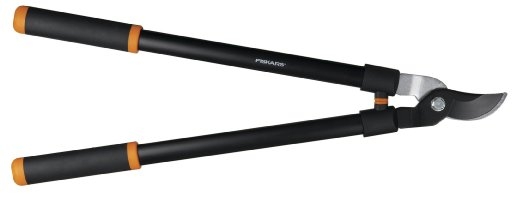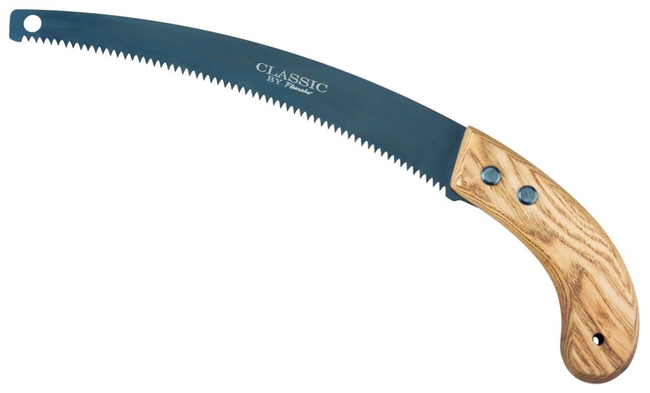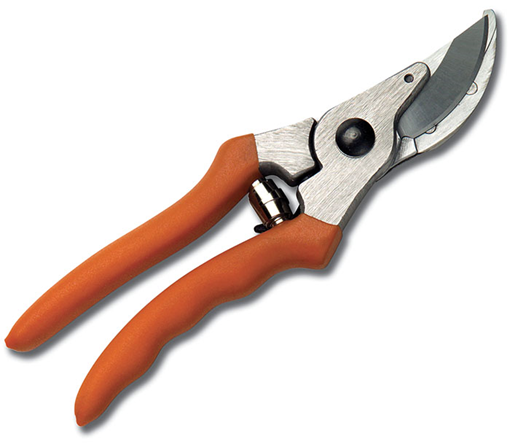Have you ever wandered into a garden store, only to be met by a bewildering array of tools hanging from the racks?
Most retail garden suppliers stock an impressive variety of hand-operated (non-power) pruning tools, but offer scant guidance on how to choose the one you really need.
“Tool talk” might not be the most exciting garden-related topic, but it's important to know how to properly use and care for each type of pruning implement.
These short-handled tools are generally intended for use on plant stems and small branches ½ inch in diameter or less
Loppers
Two hands are needed to operate these long-handled tools, which are designed to cut branches up to 1 to 1½ inches in diameter. Loppers should be used primarily to cut dead or just-removed branches into smaller pieces; avoid using them for pruning, since they tend to damage branches.
Hand pruners and loppers come with two distinct blade configurations, each with special uses and care needs. A third type of blade arrangement applies only to pruners.
- Bypass: This style has a curved upper blade that glides past a lower curved “hook” or “anvil.” The hook holds a stem or branch while the blade cuts. Bypass-type tools are the best choice for most gardening work since they're designed for use on live plant material. The blade is only beveled on the edge facing away from the anvil; the other side is flat. Never sharpen the flat edge of the blade on bypass-style tools; doing so leaves a gap between blade and anvil and causes branches to get stuck in the tool. When cutting, place the blade side of a bypass tool toward the main stem and away from the part being removed.

- Anvil: This style has a straight-edged upper blade that moves downward to meet the center of a flat-surfaced lower “anvil” or “table.” Anvil-type tools should only be used on dead branches—never on live, healthy ones—since they don't cleanly cut all the way through stems and their blade action tends to crush delicate plant tissues. The blade of anvil-style tools is beveled on both sides, so both edges need to be evenly sharpened if they become dull.
- Scissor: As the name implies, this style of hand pruner operates like a pair of scissors, with two short, straight, sharpened blades. They're designed only for lightweight tasks such as pruning tiny twigs and flower or herb stems.
Hand saws
Not all hand saws are designed for pruning use. Carpenter saws, which have straight blades and a hand-hole in the 
Hand-operated pruning tools are also available in “extension” or pole-mounted forms, and some have a telescoping feature that allows adjustment of the pole's length. Pole saws and extension pruners can greatly increase an operator's reach, but they tend to be unwieldy and less precise. For safety reasons, never operate pole-type tools near overhead power lines.
When using any type of pruning tool, be careful to avoid a twisting action while cutting to prevent tearing bark, creating ragged-edged cuts, or damaging tool blades.
It's also important to care for your pruning tools to keep them in top operating condition. Always keep the blades properly sharpened to avoid damaging plant tissues and to reduce pruning effort. Thoroughly clean, dry, and oil tools after use to prevent rusting and to avoid transmitting plant pathogens.
For photos and more information, see Pruning Equipment for Home Gardeners, Sharpening Blades, and Maintaining Lawn and Garden Tools.
Happy New Year!
If you have a gardening related question you can contact the UC Master Gardeners at 209-953-6112. More information can be found on our website: http://sjmastergardeners.ucanr.edu/CONTACT_US/

